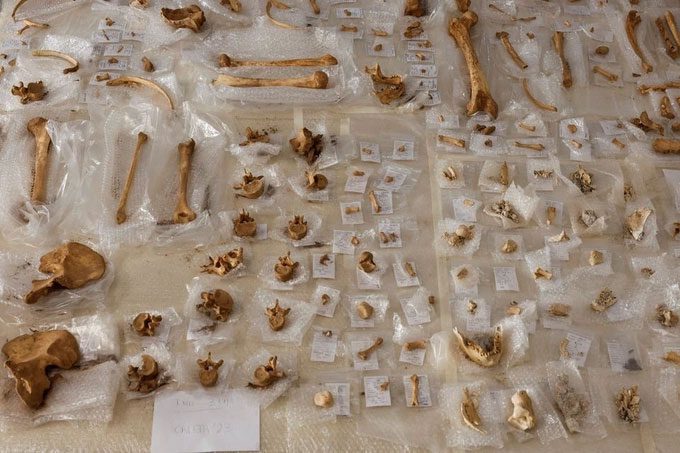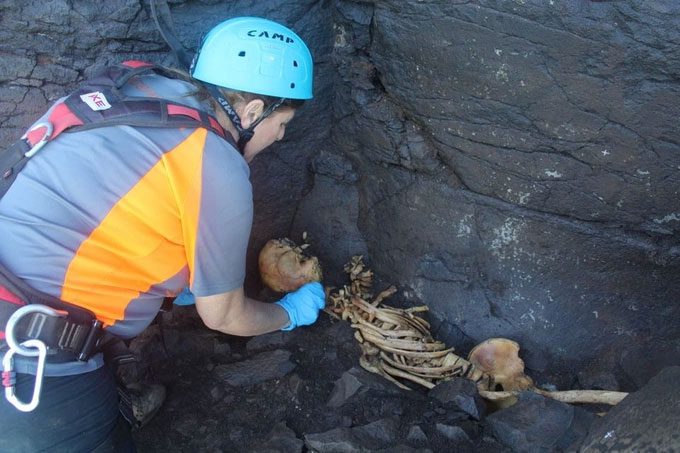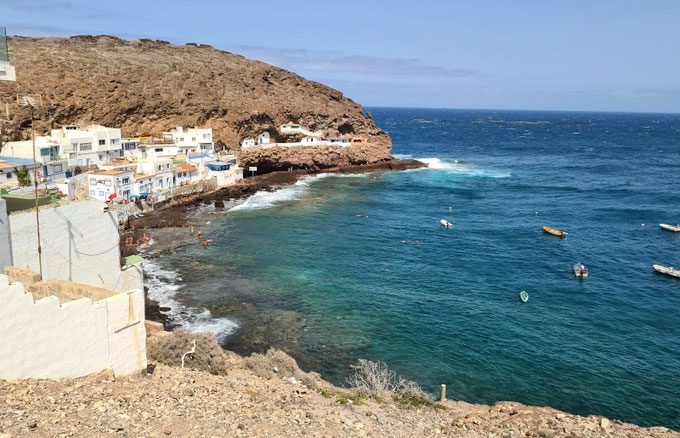The reason behind the discovery of six skeletons positioned face down in a cave on a cliff remains a question that experts are diligently trying to answer.
On the cliffs of Grand Canaria, Spain, a mystery awaits resolution. Here, an archaeological team has uncovered six skeletons lying face down. Some were found bound and covered with stones. The identities of these individuals and the circumstances surrounding their deaths remain unanswered.
According to initial assessments by archaeologist Veronica Alberto, the leader of the excavation team, it is clear that this group experienced a “violent death” centuries ago.

The skeletons found on the cliff. (Photo: Reuters).
“They were not buried in the traditional sense. This is a burial practice that indicates a very strong symbolic violence. Some bodies were pressed onto the surface and then covered with stones. Some were bound at their hands and feet or had straps,” archaeologist Veronica stated.
Moreover, these mysterious skeletons exhibit some unique characteristics. They are all male and possess strong arms. The archaeological team speculates that these individuals may have participated in certain physical activities. However, determining the time of death is quite challenging.

The identities of the skeletons remain unidentified. (Photo: Reuters).
“This could be the grave of indigenous people. However, due to the characteristics of the archaeological site, we need to expand our research to see if it may belong to periods following the Spanish conquest of the Aztec Empire in the 15th century,” Ms. Veronica added.
Currently, experts have not found any artifacts or materials that could provide clues about the remains of these men. Therefore, they must wait for the results of carbon dating.

A scenic view of Gran Canaria, Spain. (Photo: Trip).
|
Gran Canaria is one of the Canary Islands of Spain located off the northwest coast of Africa. It is also known for its stunning white sandy beaches and black lava. The southern beaches, including Playa del Ingles and Puerto Rico, are bustling with activity, while Puerto de Mogan and San Agustin beaches are quieter. In the north, the city of Las Palmas serves as a major stop for cruise ships and is a duty-free shopping area. |





















































